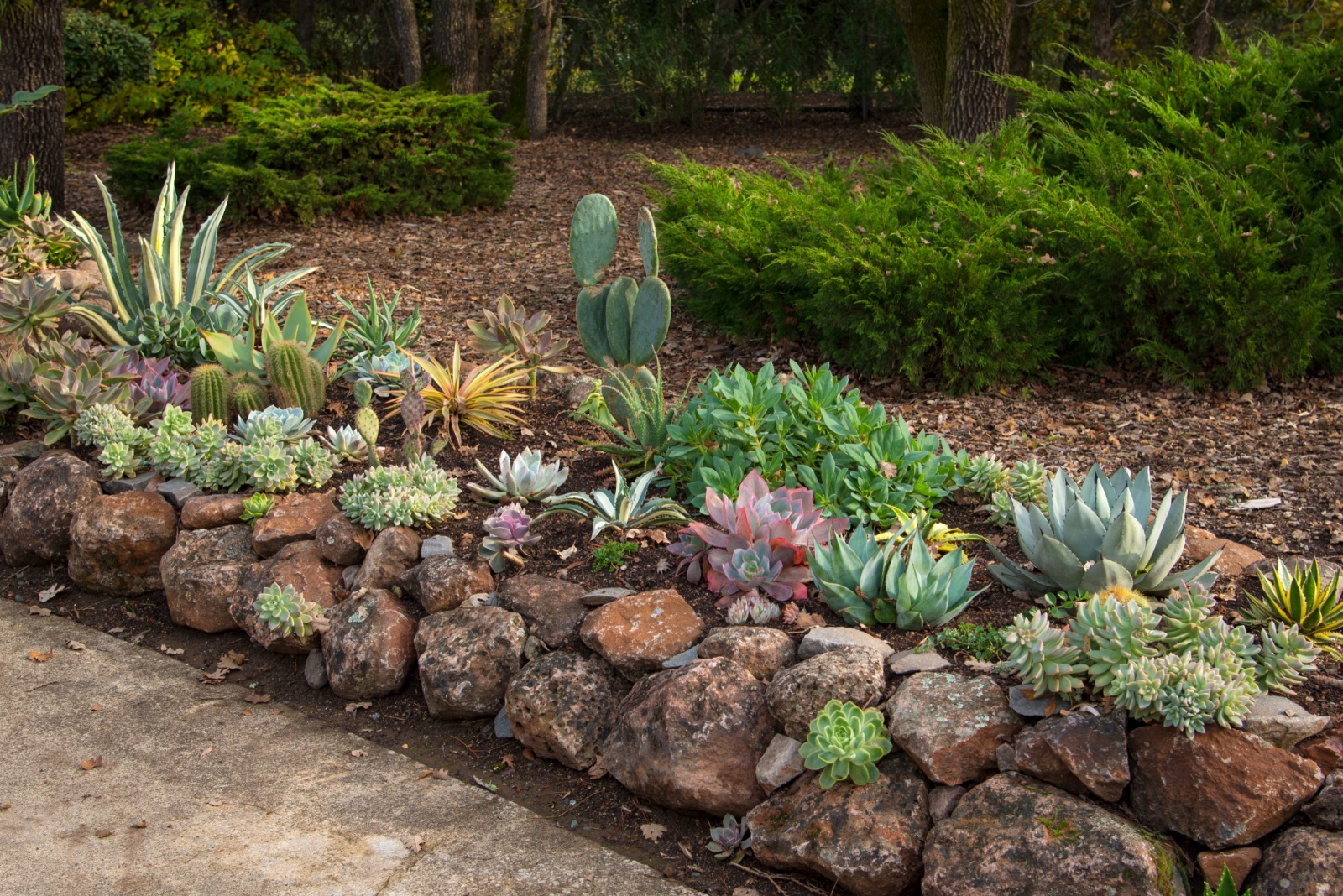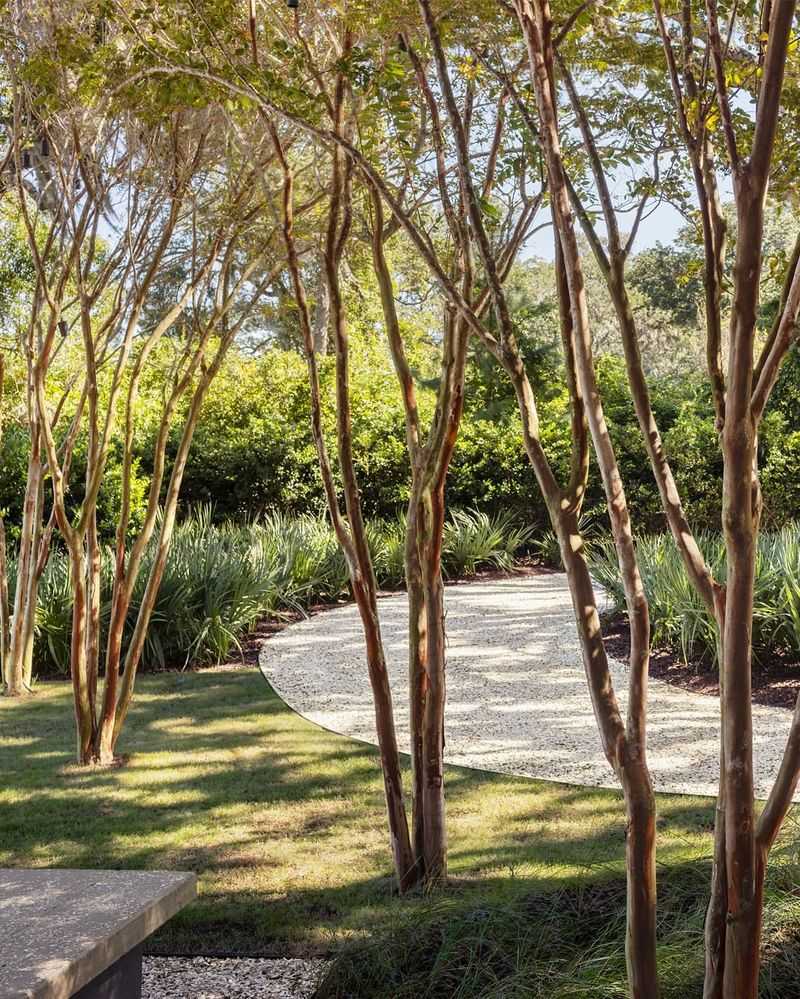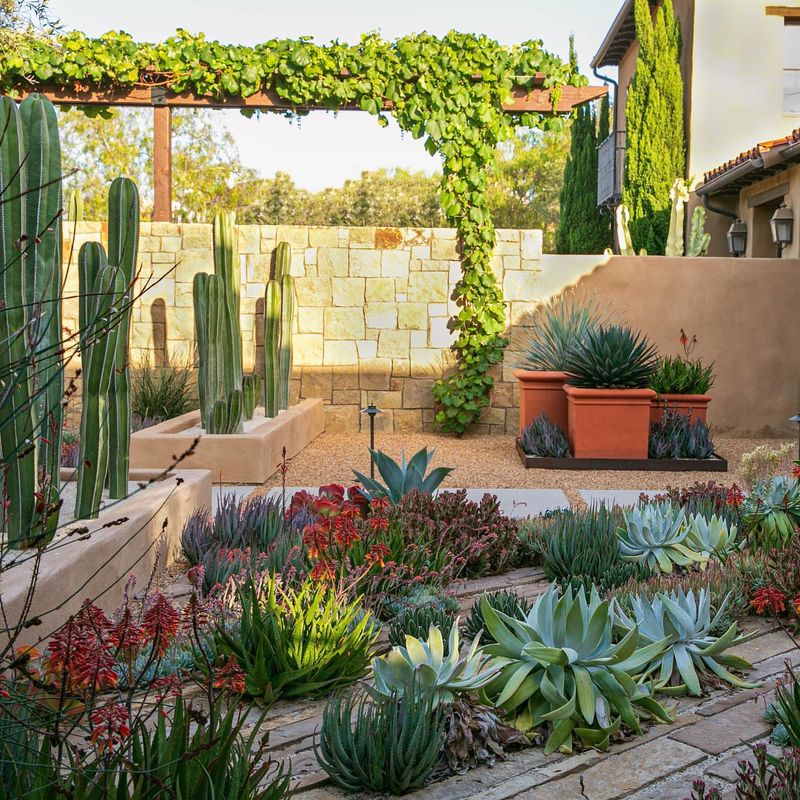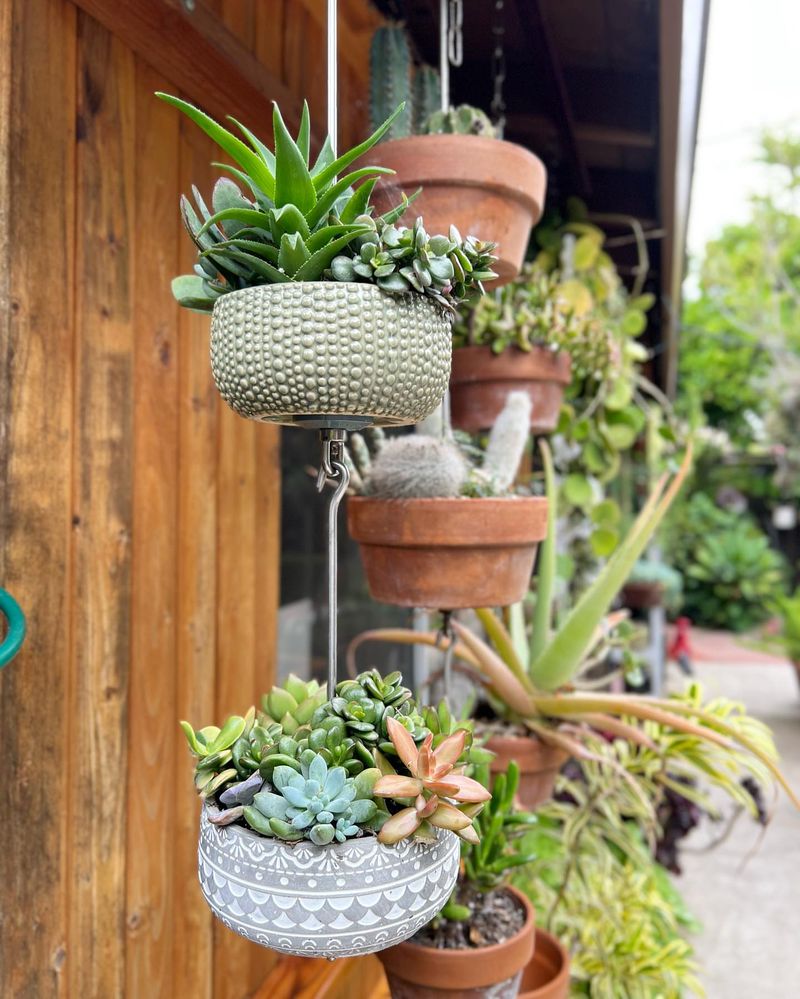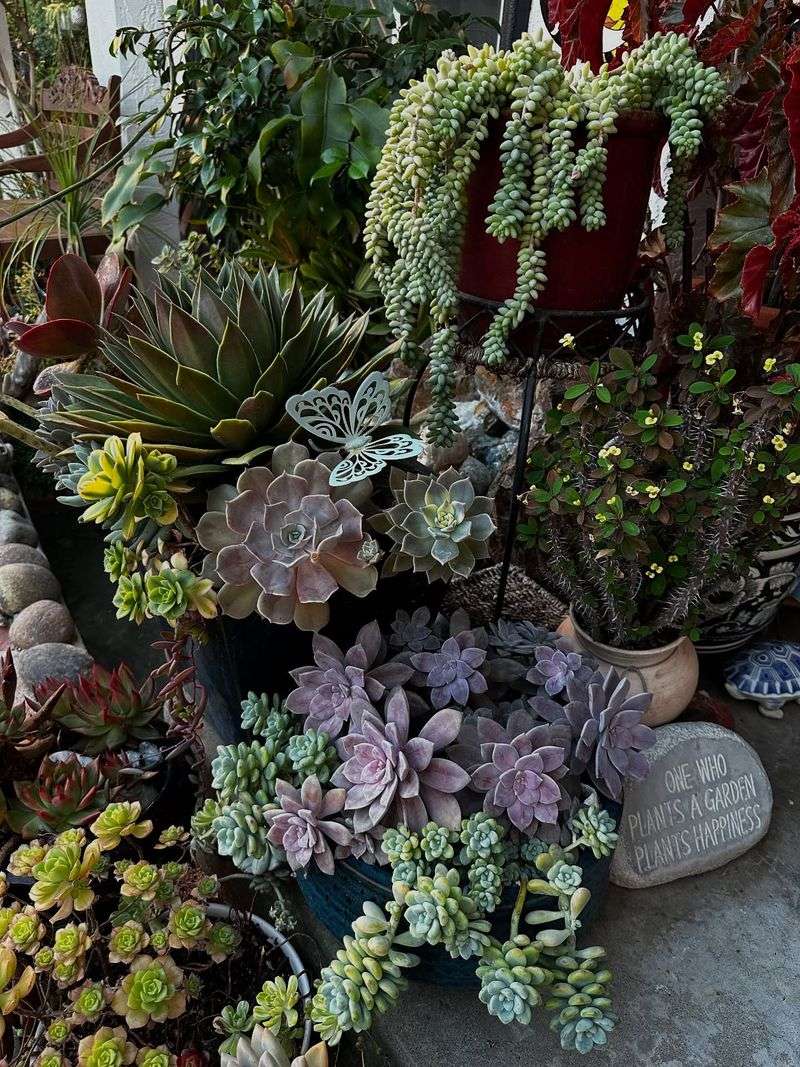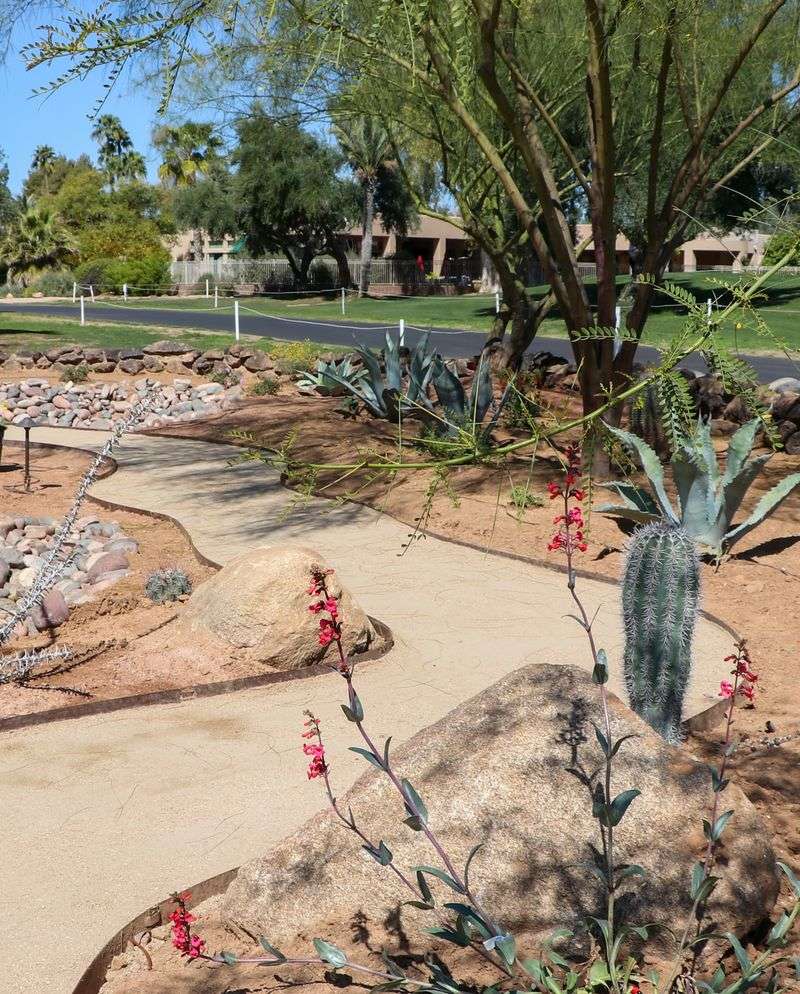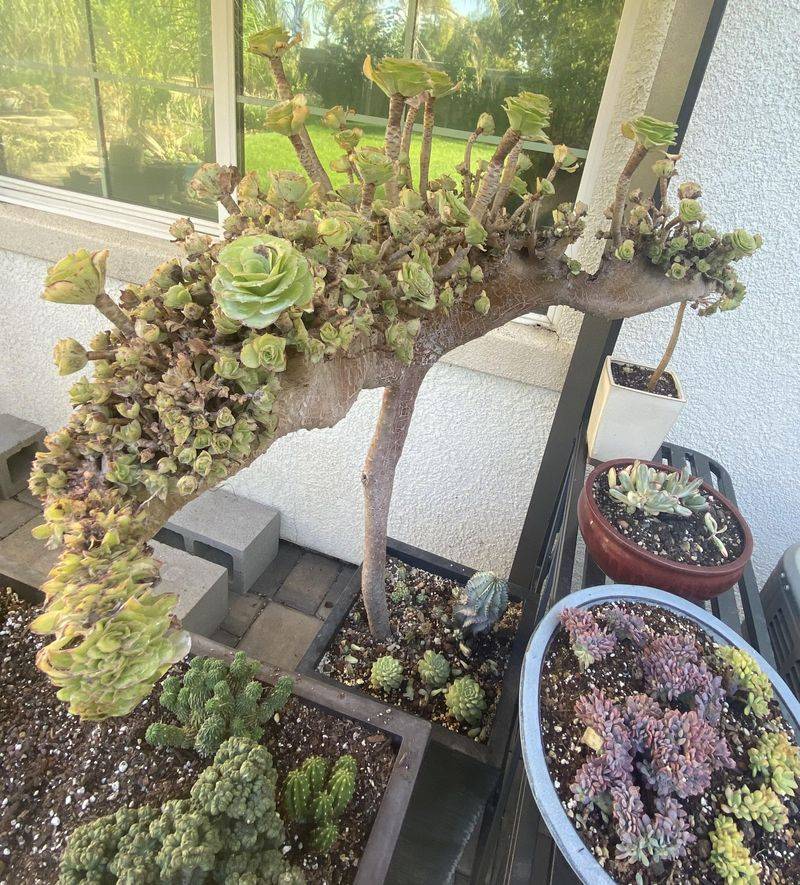Phoenix’s brutal fall sun can turn your prized succulents into crispy critters overnight. Micro forest groves offer a clever solution by creating natural shade pockets in your yard where delicate plants can thrive.
These miniature ecosystems not only protect your succulents but also add dimension and beauty to your desert landscape.
1. Plant Native Trees As Anchors
Desert-adapted trees like Palo Verde and Mesquite make perfect anchors for your micro forest. Their dappled shade creates just enough protection without completely blocking the light succulents need.
Choose smaller varieties that won’t overwhelm your yard but still provide adequate canopy coverage. The natural leaf drop from these trees also adds valuable organic matter to your soil over time.
2. Create Multi-Level Planting Zones
Arrange your micro forest with taller plants at the back and gradually shorter ones toward the front. This tiered approach allows each plant to receive the right amount of filtered light while creating natural cooling pockets.
Medium-sized shrubs like creosote bush or compact agave work well in the middle layer. Your prized succulents can then nestle in the protected lower zones where they’ll receive gentle morning sun.
3. Use Movable Containers for Flexibility
Not every succulent needs the same amount of protection! Place some of your potted specimens on rolling platforms or lightweight containers that you can reposition as the sun angle changes throughout fall.
Morning sun is gentler than afternoon rays in Phoenix. Having movable plants lets you fine-tune their exposure without disturbing your garden’s overall design. Keep a few empty spots under your micro forest canopy for rotating vulnerable plants.
4. Install Temporary Shade Cloth Bridges
Connect your micro forest trees with lightweight shade cloth during the most intense heat periods. These aerial bridges expand your shade footprint without permanent structures. Look for 30-40% shade cloth that blocks just enough sun while allowing airflow.
Attach using bungee cords or garden twine for easy installation and removal. The resulting shade pattern creates interesting light play across your succulents while protecting them.
5. Incorporate Rock Features as Heat Buffers
Large decorative boulders placed strategically within your micro forest do double duty. They absorb daytime heat and slowly release it overnight, creating more stable temperatures for your succulents.
Position flat-topped rocks on the western side of delicate plants to shield them from harsh afternoon sun. The natural look of weathered desert stones also complements your succulents beautifully while serving a practical purpose in your Phoenix yard.
6. Maintain Proper Spacing for Air Circulation
A common mistake is cramming too many plants together! Even in a micro forest, your succulents need breathing room to prevent fungal issues in Phoenix’s monsoon season. Space trees at least 8-10 feet apart and underplant with succulents that have similar water needs.
The gaps between plants allow cooling breezes to flow through while still providing broken shade patterns. Your succulents will thank you with healthier growth and fewer pest problems.
7. Water Deeply to Encourage Root Shade
Smart watering practices help your micro forest create its own underground shade network. Deep, infrequent irrigation encourages trees and larger plants to send roots downward rather than competing with your succulents.
Apply water at the drip line of trees, not at their trunks. This draws roots outward, creating a protective zone for succulents planted nearby. The resulting root shade keeps soil temperatures lower even when air temperatures soar during Phoenix’s extended fall season.

